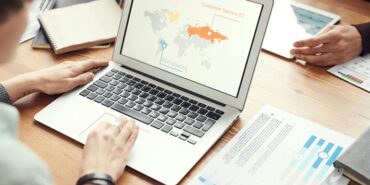Blog
Navigating High School Placement: Study Options in the USA

Owing to that, the no. of international high school students tripled between 2004 and 2016, now totaling nearly 82,000. Moreover, colleges host more than a million international learners each year.
So, if you’re planning to study in the U.S. or helping a student make this important decision, this guide will help you make the best choice, while also answering your critical questions for better clarification.
Why Choosing the Right High School is Crucial for Students' Academic and Personal Growth?
The school you choose for your high school education leaves an indelible mark on your personal and academic life. Here’s a few things that you shouldn’t miss -:
1. Academic Fit
The right high school offers a solid curriculum to learn and gain valuable knowledge and experience that aligns with your future goals and interests. Typically, it gives the necessary academic support, from advanced classes to tutoring services so you can successfully enroll in a prestigious university later on.
2. Extracurricular Activities and Opportunities
Beyond Academics, it’s equally important for a student to participate and excel in extracurricular activities. In fact, most prestigious universities often ask for proof of work done beyond school.
For instance, if you want to navigate through high school placement, invest yourself in internships, participate in clubs, or network with professionals to gain valuable experience.
3. Wellbeing Initiatives
Apart from extracurricular activities, wellbeing initiatives are often overlooked. However, the main thing is teenagers need to feel safe when they go to high school, not only physically but mentally as well.
For instance, research done by theUniversity of the People shows that “More than one out of five students report being bullied in their life”.
So, the environment of high school is equally important for teenagers where students are being stressed up or bullied, but getting involved in decision making, planning team building activities.
It should give equal opportunity to every student to keep up their mind without being judgemental. Yes, it makes a difference.
4. Social Environment
According to research, friendships can positively impact students' academic performance and grade point average (GPA). Because it provides thorough emotional support and reduces stress, leading to improved focus and better concentration on studies.
Thus, having a supportive and inclusive school fosters healthy social interaction. This promotes students to extend their networks and become more vocal.
While the list presented takes into account the aspects that we consider important, there are also some other things that might affect your decision-making process.
Different Types of High Schools To Consider
| Type of School | Funding | Tuition Costs | Curriculum | Admission Criteria | Class Size | Specialization | Pros | Cons |
|---|---|---|---|---|---|---|---|---|
| Public Schools | Government-funded (state, local taxes) | Free for residents | Standardized, follows state guidelines | Open to all students in the district | Typically larger classes | General education with a wide range of subjects | Accessible, diverse, community-oriented | Quality varies by district; can be overcrowded |
| Private Schools | Funded through tuition, donations, endowments | High tuition (varies widely) | More flexibility in curriculum choices | Selective, often based on testing and interviews | Typically smaller classes | May offer specialized programs (e.g., religious, arts) | Smaller class sizes, personalized attention | Expensive, less diversity in the student population |
| Charter Schools | Operated by independent organizations separate from the local school board | Free (some may charge minimal fees) | Innovative, varies by school | Lottery-based applications can be competitive | Varies, often smaller than public schools | Often focused on specific educational approaches | Don’t have to follow all the rules that traditional public schools follow | Resources can be limited, and quality varies |
| Magnet Schools | Public schools operated by school districts or a group of districts | Free for residents | Specialized curriculum (e.g., STEM, arts) | Selective, based on application and sometimes testing | Varies, typically smaller | Focus on specific themes or areas of study | Offers special education services and has specialists in the school | Waiting lists may be long because of high demand and limited enrollment |
How Do I Choose A High School In The US?
Choosing the right high school in the U.S. can be quite overwhelming. However, focus on these few key factors to make a well-informed decision-:
- Identify your priorities and consider thetype of academic programs a school offers.
- Calculate & determine how much money to spend on high school.
- Check if it offers any financial aid or scholarships to help offset the cost.
- Consider location preference for an easy commute, school size, culture, and environment.
- Determine if you’re looking for public or private, magnet or charter school.
- Check if a school offers Advanced Placement (AP) courses, International Baccalaureate (IB) programs, or other specialized tracks.
- Never miss on school ratings. Visit schools & speak with school counselors or educational consultants.
What Are The Stages Of High School In The US?
There are 4 main stages of high school in the U.S.:
1. Freshman Year (9th Grade)
Age Range: Typically 14-15 years oldFocus: Explore new things & participate in extracurricular activities
2. Sophomore Year (10th Grade)
Age Range: Typically 15-16 years oldFocus: Think seriously about the future and possibly plan to take the SAT or ACT PSAT for college entrance exams.
3. Junior Year (11th Grade)
Age Range: Typically 16-17 years oldFocus: Take advanced courses like IB or AP, explore colleges and career options, and prepare for the SAT or ACT.
4. Senior Year (12th Grade)
Age Range: Typically 17-18 years oldFocus: Apply for colleges and finalize post-graduation plans
How does the American school system work?
| Category | Description |
|---|---|
| Levels of Education |
|
| Types of Schools |
|
| Types of Accreditation in the US System |
|
| Grading System |
|
| Extracurricular Activities |
|
The Final Words
It’s a wrap!
Now that you’ve clearly understood the types, stages, and levels of high school in the US, you’re better informed than most.
Whether you’re selecting any public, private, magnet, or charter high school, ensure it aligns with your personal development and career goals.
However, if you need any professional assistance to support your long-term success and well-being, book us an appointment today!
Talk to our experts at ERES and we’re all here to help, anytime!
Start Now
ERES
Educational Records Evaluation Service helps Non-US educated individuals to receive their US equivalences with our credential evaluation reports.
Services
Contact us
Tue - Fri: 10:00 to 16:00 ( PST )
4773 Mangels Blvd, Fairfield, CA 94534, USA.
© 2025 Educational Records Evaluation Service. All rights reserved.











